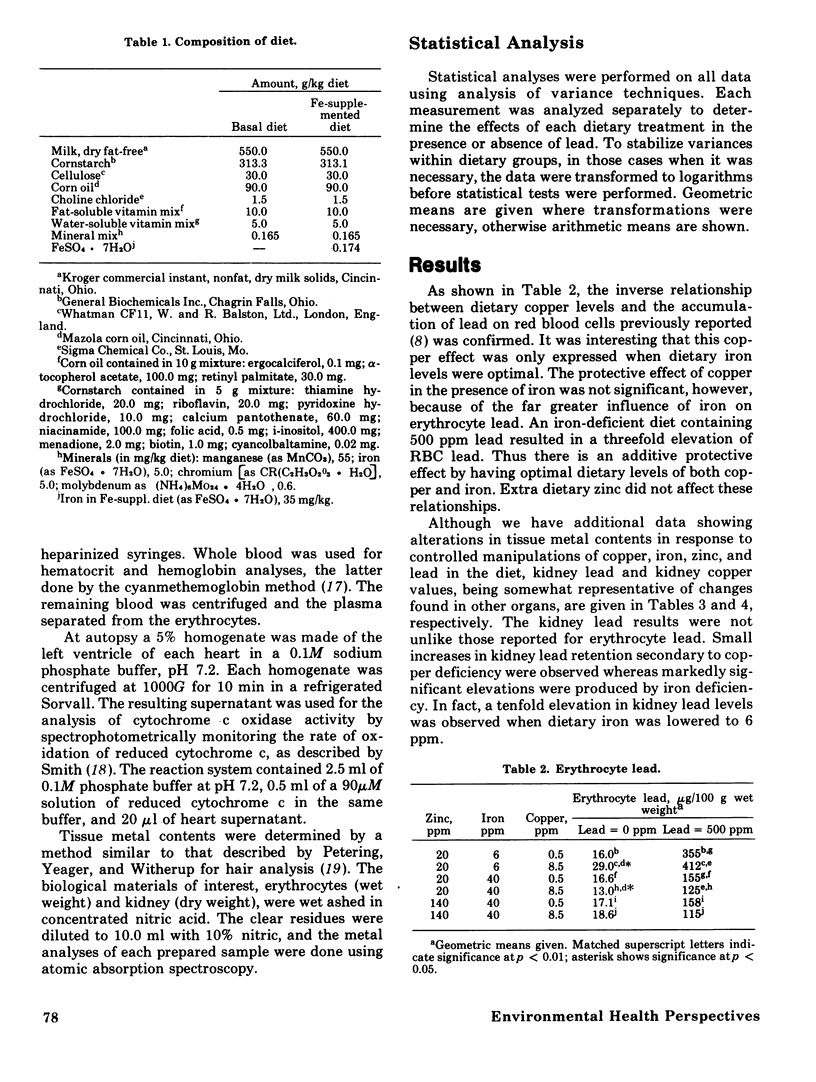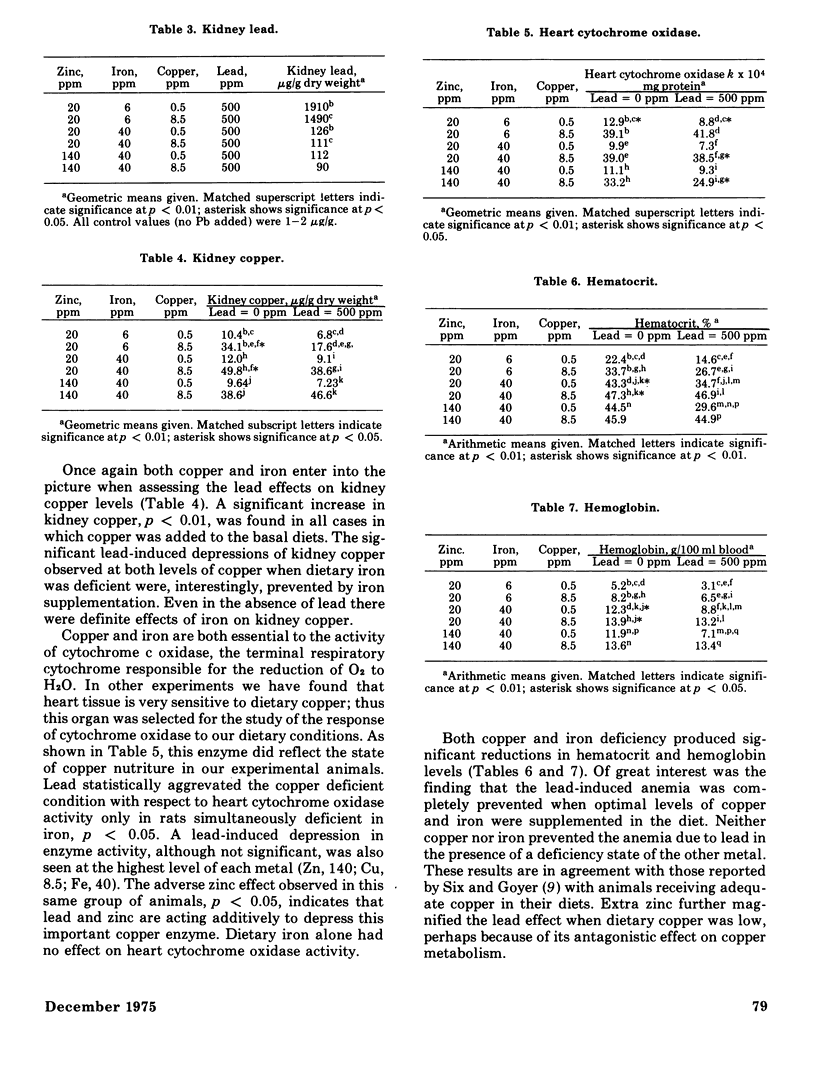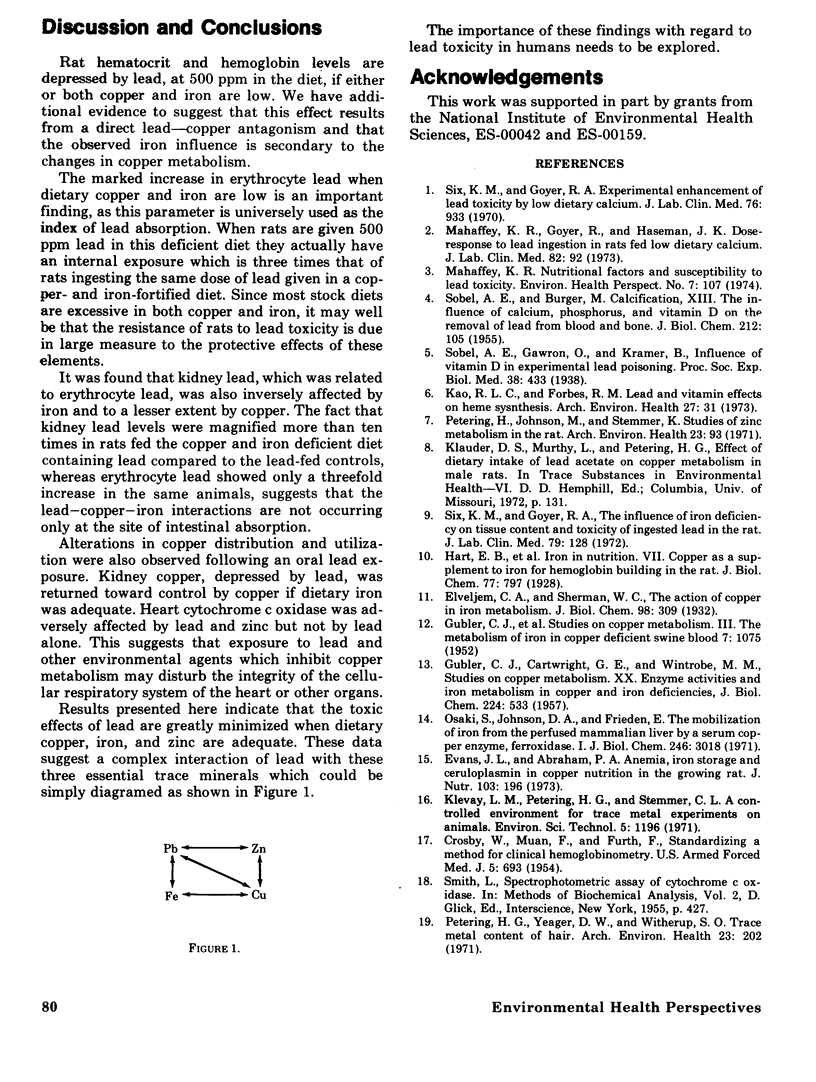Abstract
Both dietary iron and copper were inversely related to lead absorption as indicated by erythrocyte and kidney lead levels, dietary iron having the greatest effect. Kidney copper values were depressed when dietary iron was low, a condition which was worsened by lead. Lead tended to lower heart cytochrome c oxidase especially when dietary copper was low, but also when dietary copper and zinc were high. Lead interfered with hematopoiesis when dietary copper and/or iron were low, the effect being expecially severe when both essential nutrients were low. These results show the importance of copper and iron nutriture and metabolism as factors which reduce lead toxicity, and emphasize the necessity of considering nutritional status in evaluating lead toxicity.
Full text
PDF



Selected References
These references are in PubMed. This may not be the complete list of references from this article.
- CARTWRIGHT G. E., GUBLER C. J., WINTROBE M. M. Studies on copper metabolism. XX. Enzyme activities and iron metabolism in copper and iron deficiencies. J Biol Chem. 1957 Jan;224(1):533–546. [PubMed] [Google Scholar]
- CROSBY W. H., MUNN J. I., FURTH F. W. Standardizing a method for clinical hemoglobinometry. U S Armed Forces Med J. 1954 May;5(5):693–703. [PubMed] [Google Scholar]
- Evans J. L., Abraham P. A. Anemia, iron storage and ceruloplasmin in copper nutrition in the growing rat. J Nutr. 1973 Feb;103(2):196–201. doi: 10.1093/jn/103.2.196. [DOI] [PubMed] [Google Scholar]
- GUBLER C. J., LAHEY M. E., CHASE M. S., CARTWRIGHT G. E., WINTROBE M. M. Studies on copper metabolism. III. The metabolism of iron in copper deficient swine. Blood. 1952 Nov;7(11):1075–1092. [PubMed] [Google Scholar]
- Kao R. L., Forbes R. M. Lead and vitamin effects on heme synthesis. Arch Environ Health. 1973 Jul;27(1):31–35. doi: 10.1080/00039896.1973.10666303. [DOI] [PubMed] [Google Scholar]
- Mahaffey K. R., Goyer R., Haseman J. K. Dose-response to lead ingestion in rats fed low dietary calcium. J Lab Clin Med. 1973 Jul;82(1):92–100. [PubMed] [Google Scholar]
- Mahaffey K. R. Nutritional factors and susceptibility to lead toxicity. Environ Health Perspect. 1974 May;7:107–112. doi: 10.1289/ehp.747107. [DOI] [PMC free article] [PubMed] [Google Scholar]
- Osaki S., Johnson D. A., Frieden E. The mobilization of iron from the perfused mammalian liver by a serum copper enzyme, ferroxidase I. J Biol Chem. 1971 May 10;246(9):3018–3023. [PubMed] [Google Scholar]
- Petering H. G., Yeager D. W., Witherup S. O. Trace metal content of hair. I. Zinc and copper content of human hair in relation to age and sex. Arch Environ Health. 1971 Sep;23(3):202–207. doi: 10.1080/00039896.1971.10665986. [DOI] [PubMed] [Google Scholar]
- SOBEL A. E., BURGER M. Calcification. XIII. The influence of calcium, phosphorus, and vitamin D on the removal of lead from blood and bone. J Biol Chem. 1955 Jan;212(1):105–110. [PubMed] [Google Scholar]
- Six K. M., Goyer R. A. Experimental enhancement of lead toxicity by low dietary calcium. J Lab Clin Med. 1970 Dec;76(6):933–942. [PubMed] [Google Scholar]
- Six K. M., Goyer R. A. The influence of iron deficiency on tissue content and toxicity of ingested lead in the rat. J Lab Clin Med. 1972 Jan;79(1):128–136. [PubMed] [Google Scholar]


